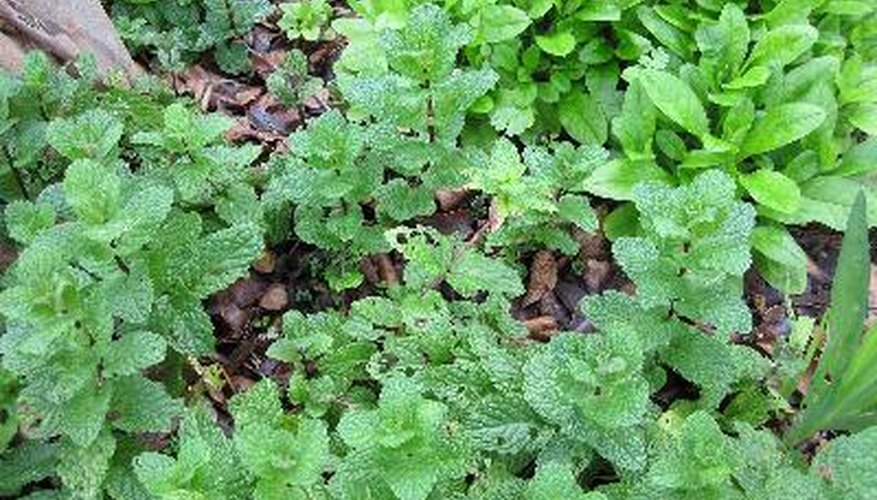For the perfect mojito or mint jelly for your lamb chops, nothing compares to a fresh sprig of mint from your very own garden. Mint tends to need little care beyond watering, but if you start to see small black spots on the leaves of your mint, it could spell disaster for the entire crop. There are a number of causes of these spots. Take immediate action to eliminate the causes quickly before your mint is ruined.
Mint Rust
The disease mint rust is caused by a fungus that spreads among herbs and can cause orange, yellow or black spots on the leaves of your mint. The fungus that causes the mint rust cannot survive on dead plants and so will quickly spread to another host and can potentially eliminate your entire garden of mint (as well as savoury and marjoram, if you grow those too). Aside from the spots, you may also notice your mint plant taking on a pale green colour instead of the customary deep green. Mint rust can lead to significant leaf drop and the death of most of the healthy tissue, eventually leading to the death of the entire plant.
- The disease mint rust is caused by a fungus that spreads among herbs and can cause orange, yellow or black spots on the leaves of your mint.
- The fungus that causes the mint rust cannot survive on dead plants and so will quickly spread to another host and can potentially eliminate your entire garden of mint (as well as savoury and marjoram, if you grow those too).
Treatment
Remove the leaves (or the entire plant, if necessary) as soon as you notice the little spots. If the infected leaves fall, they can infect the soil and the fungus will spread quickly. If you have to remove an entire plant, remove all roots and rhizomes as well. If most of your garden is infected, look for healthy plants and move them away from the infestation, but don't plant any new mint nearby until you are sure the plants didn't bring the rust with them. Certain fungicides can treat mint rust, but they cannot be used on mint intended for consumption, as the chemicals are also harmful for humans.
- Remove the leaves (or the entire plant, if necessary) as soon as you notice the little spots.
- If most of your garden is infected, look for healthy plants and move them away from the infestation, but don't plant any new mint nearby until you are sure the plants didn't bring the rust with them.
Other Causes
There are other factors that could contribute to black spots on mint leaves. Pollution from cars can lead to drying out of leaves. Similarly, if the mint has been walked on or driven over, the damage would cause black spots as well as leaf drop. Finally, overwatering or underwatering can lead to spots on the leaves; overwatering contributes to mould growth, while underwatering causes the leaves to dry out.
- There are other factors that could contribute to black spots on mint leaves.
- Finally, overwatering or underwatering can lead to spots on the leaves; overwatering contributes to mould growth, while underwatering causes the leaves to dry out.
Treatment
Plant mint far away from footpaths or driveways. This will ensure that the plants are not exposed to car exhaust, or foot and car traffic. You may even want to grow the mint in a window box or raised garden bed, where if shares soil only with other mint plants. Mint can also be highly invasive, so this could be a good way to control the spread of mint in your garden. Water the mint when the top 2 inches of soil feel dry to the touch. Add enough water so that the soil is moist to the touch but is not forming puddles. The actual amount of water and frequency of watering you need will vary by climate.
- Plant mint far away from footpaths or driveways.
- Water the mint when the top 2 inches of soil feel dry to the touch.
